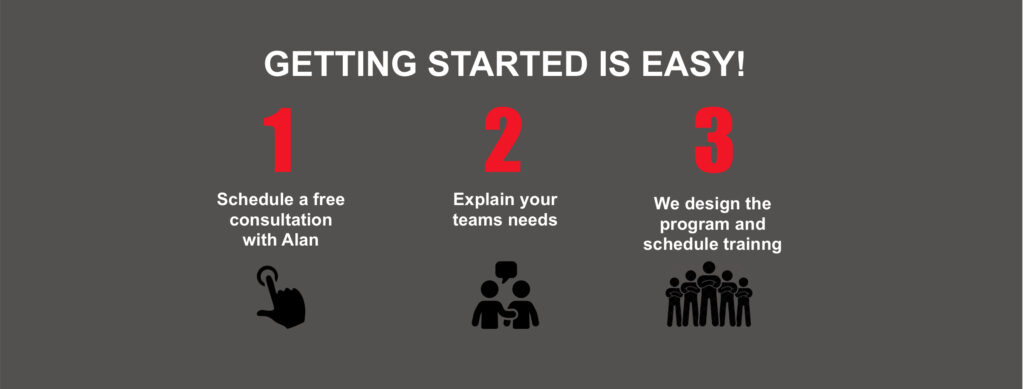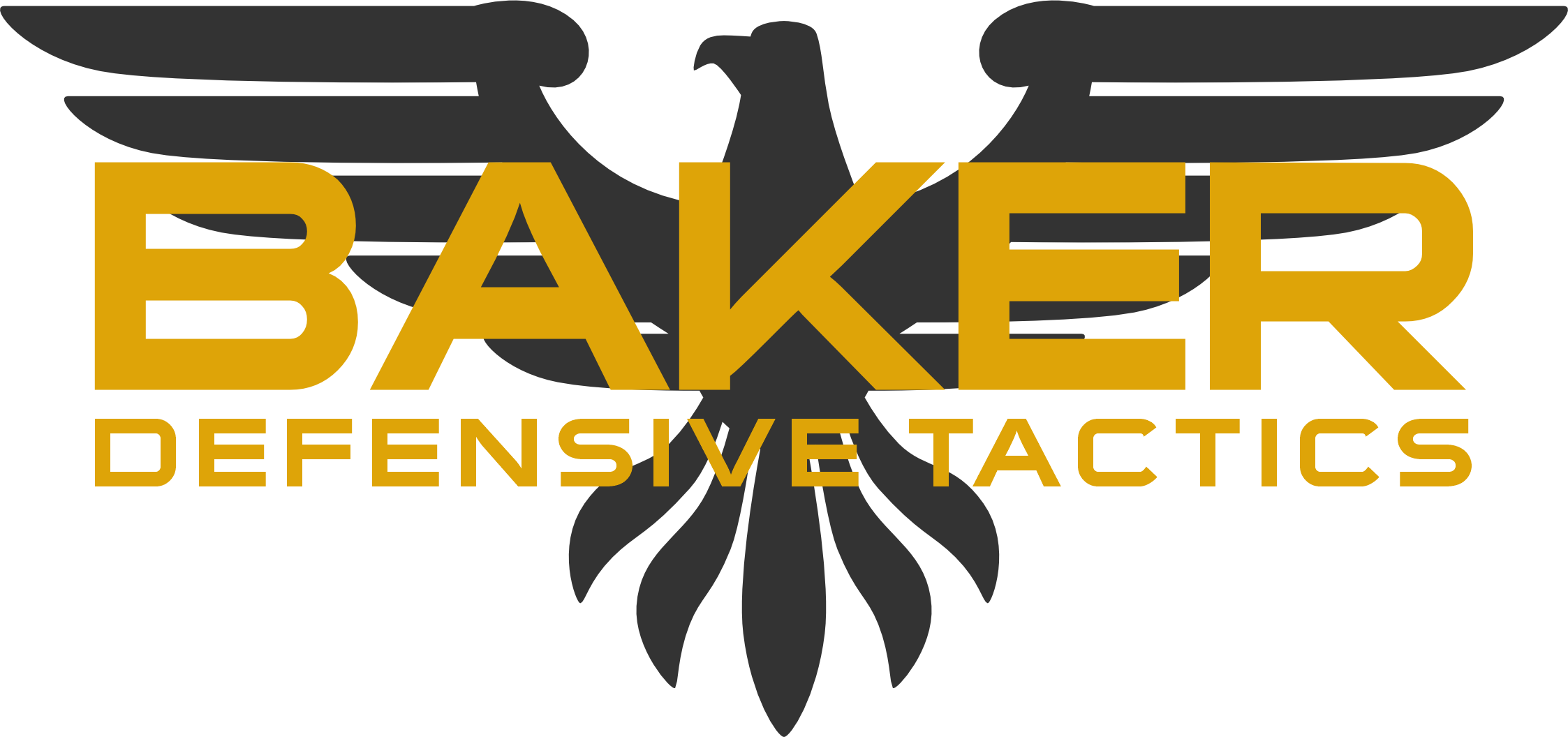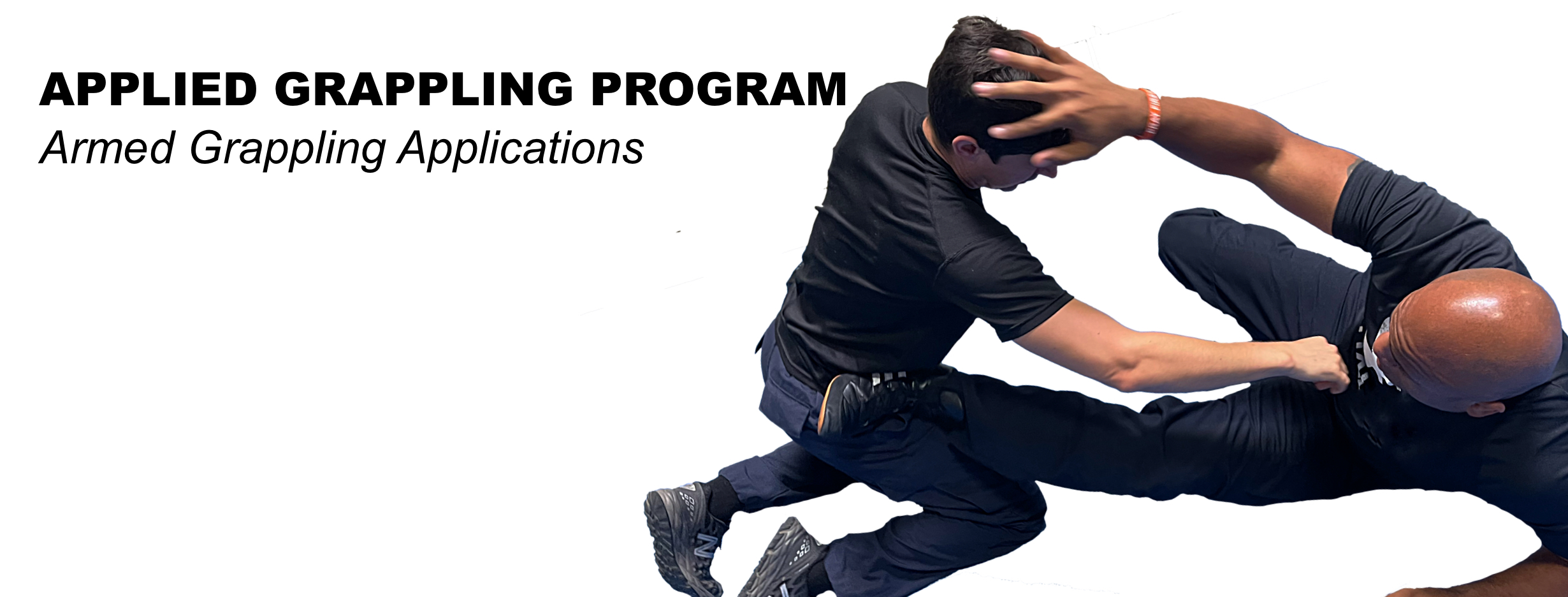We understand the critical importance of close-quarters combat and the need for comprehensive training to navigate ground-based encounters effectively. Today, we are thrilled to introduce our Applied Grappling Program, designed to equip you with the skills and techniques needed to dominate in any grappling situation. Let’s delve into how this program can transform your approach to close-quarters combat.
In the realm of close-quarters combat, the ability to control and subdue opponents on the ground is of utmost importance. Traditional martial arts training often neglects the complexities and nuances of grappling, leaving practitioners ill-prepared for real-world confrontations. That’s why our Applied Grappling Program was created—to bridge this gap and provide you with a comprehensive grappling system that works in any high-stress situation.
The applied grappling program introduces the fundamentals of grappling. Still, it takes into consideration that the student will potentially be carrying a firearm or wearing additional equipment when placed into a grappling scenario. Adding in these elements will change several of the concepts and techniques taught to a group. There are some techniques that are taught in traditional grappling programs that do not work when you must take into consideration an edged weapon or a firearm. Additionally, the applied grappling program adds in the element of potentially dealing with a second opponent. The program addresses the need for situation awareness to be trained into the practitioner as part of the development of the program.
Suppose a group or a student knows in advance that they are going to be applying grappling in a situation where they are carrying, bladed, weapons or firearms; this is the program you are looking for. From the beginning, it introduces even the basic moves and fundamentals while considering these requirements. Traditional grappling programs do not address this in any way, and it is one of the things that makes this program unique.
Our Applied Grappling Program is a cutting-edge training system specifically designed to enhance your ability to dominate ground-based encounters. Developed by industry experts with extensive experience in close-quarters combat, this program combines the best techniques and strategies from various grappling disciplines to equip you with the tools you need to prevail in any grappling scenario.
- Learn effective transitions and positional dominance: Understand the importance of fluid transitions between positions and gain the ability to establish and maintain dominant positions to control your opponent.
- Develop effective ground striking skills: Discover how to incorporate strikes from the ground, utilizing punches, elbows, and other strikes to neutralize opponents and create openings for submissions.
- Enhance your situational awareness: Our training methodology focuses on scenario-based training, enabling you to develop the ability to assess and adapt to different grappling situations effectively.
- Train with experienced instructors: Our team of expert instructors brings a wealth of practical experience in grappling and close-quarters combat, ensuring you receive top-notch training from professionals who understand the complexities of real-world confrontations.
Areas Of Study
- Mechanics – This is a detailed study of leverage, position, and the attainment of proper skeletal alignment to interact with your opponent based on intelligent mechanics and alignment instead of relying on strength. These mechanics lay the foundation of intelligent placement and utilization of bone structure to deal with pressure from a superior opponent. These concepts are generally learned by default in most educational environments. They are not directly studied or focused on by the students. Due to this, not everyone develops a solid understanding of the information. This delay in learning can cause the student to spend unnecessary time and energy focused on the wrong areas. Our goal with this parallel curriculum is to help the student achieve this knowledge quicker so that they may learn sooner to deal with aggressive energy and larger, stronger opponents. In the section, we also introduced the study of proper breathing. Proper breath combined with good alignment and skeletal placement, the student can learn to be comfortable in a defensive position, allowing them to escape and move into a more dominant position.
- Curriculum – this is the fundamental technique of the program. Techniques are the primary focus of most jiu-jitsu programs. In Living Mechanics, it is just the beginning of the educational methodology used by Professor Alan. The curriculum is influenced by Professor’s experience in multiple different grappling systems and by his various grappling instructors over the last 40+ years.
- Flow drills – These drills teach the student to move intelligently from position to position. Flow drills will also introduce the student to moving from position to position and flow from submission to submission. These drills start basic for the beginning student and then grow more advanced in movement and timing as the student grows through the system. Movement is life! And quite often, the ability to move takes considerable time for the student to learn. The goal of the section is to give the students progressive drills that grow over time and coincide with the level of skill of the student. This educational process allows them to learn the art of movement while grappling sooner, so they can apply it quicker in their learning career. It also ensures that there will be a continuous progression in their ability to use movement as they advance through their grappling career.
- Philosophy – Understanding what you’re trying to do and what your goal is as you train is very important. Each level, from basic up to advanced, has a specific training methodology in philosophy that is followed to ensure a proper mindset and keep the student focused and on track for their overall goals of obtaining proficiency.
Are you ready to take your grappling skills to the next level? Don’t settle for average training that leaves you unprepared for real-world confrontations. Enroll in our Applied Grappling Program today and gain the confidence and expertise needed to dominate ground-based encounters. Visit our website or contact our team to secure your spot in our upcoming training sessions. Invest in your skills and be prepared for any grappling situation that may arise.


